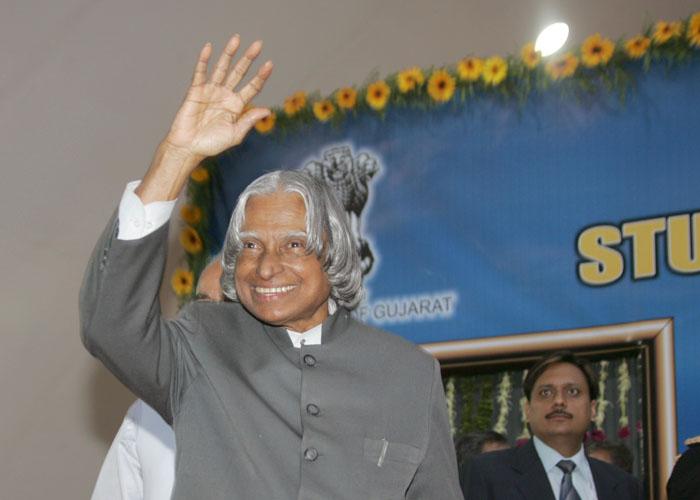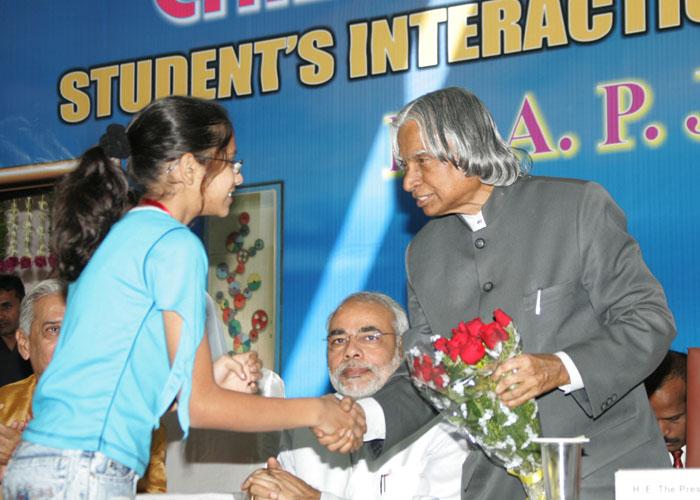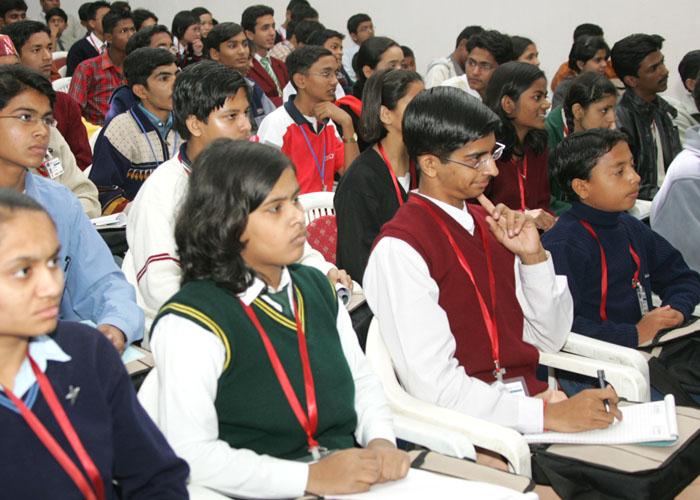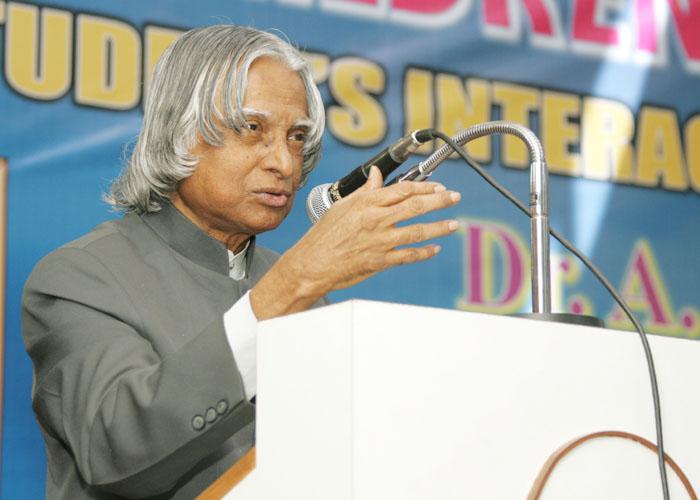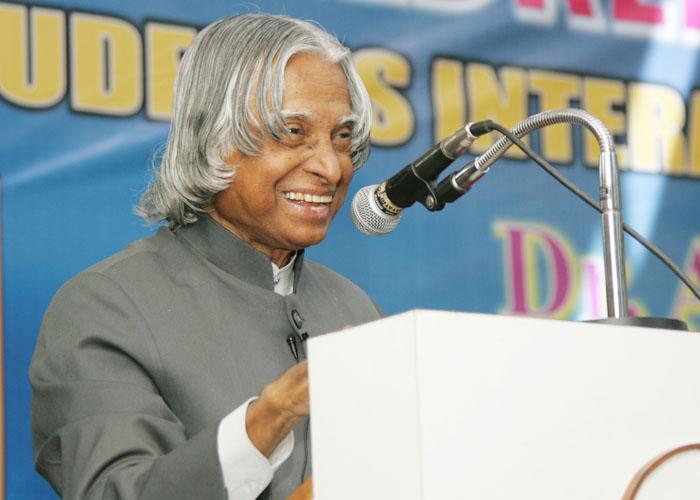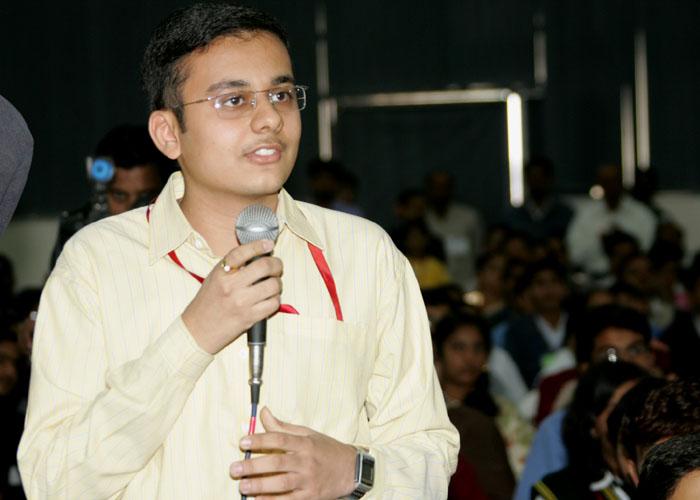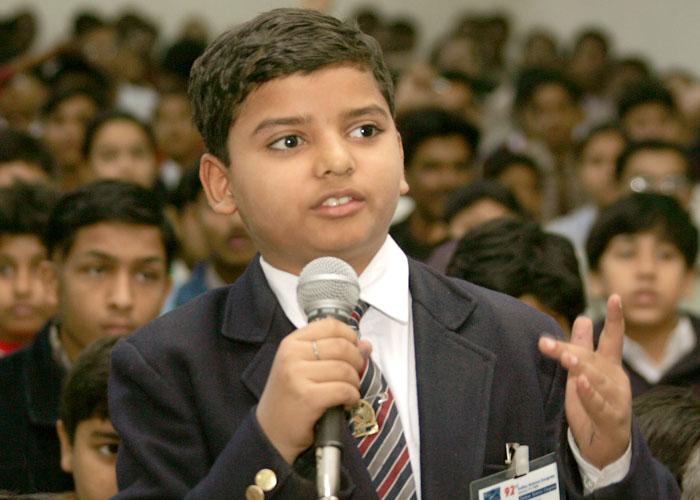Address And Interaction With The Children's Science Congress At Science City, Ahmedabad
Ahmedabad : 05-01-2005
INNOVATIVE MINDS
I am indeed delighted to interact with the students participating in the Children?s Science Congress organised by the Indian Science Congress Association.
My greetings to the student community and organizers of this science congress. I am happy that this event is integrating millions of children in the age group of 10 to 17 to interact in a common scientific platform. The topic I have chosen for discussion is ?Innovative Minds?.
Bumble Bee
According to the laws of aerodynamics the bumble bee should be unable to fly. Because of the size, weight, and shape of its body in relationship to the total wing span, flying is scientifically impossible. The bumblebee, being ignorant of scientific theory, keeps fluttering her wings. This high frequency vibration creates a vortex which enables it to fly. With determined efforts you can always succeed against established patterns.
Brahmos Supersonic Cruise Missile
The world is currently dominated by subsonic cruise missiles such as, Tomahawk, Harpoon and Exocet. However, with the advent of modern missile defence systems involving quick reaction missiles and lasers, the effectiveness of subsonic cruise missiles in penetrating the enemy defences has become limited. Hence, the need for faster missiles which can break the sound barrier. They are the supersonic missiles. India and Russia joined together as partners to develop a supersonic cruise missile by combining the technological capabilities of both countries accrued over last few decades. India?s Prithvi and Agni use advanced onboard computer and inertial navigation system. Russia recently developed an air breathing propulsion which can thrust the missile to supersonic speed. The scientific development of both countries therefore became handy to jointly design and develop a new system. The result of this joint effort is BRAHMOS. BrahMos comes from the names of two rivers, Brahmputra of India and Moscowa of Russia.
The BrahMos Missile has twin roles against sea and land based targets and can be fitted on multiple platforms including ships, submarines, aircraft, mobile ground platforms and silos. The missile has a range of 300 km with 300 kg warhead. The cruise missile used in the gulf war flies at a speed of 800 km/hr, like the speed of passenger jet aircraft. It is less than the speed of sound. BrahMos flies at a speed of more than 3 times the speed of jet, i.e., 3000 km/hr. Due to its supersonic speed the missile has definite advantage of shorter flight time to a target, before it could move away from the detected position. The reaction time available for the enemy to intercept or take preparatory steps to get away from the attack is drastically low. Due to the higher velocity of the supersonic missiles, the kinetic energy imparted on the target upon missile hit will be much higher thereby enabling higher level of damage to the target. BrahMos has nine times kill energy (1/2 mV2) compare to the existing cruise missile.
The BrahMos missile is first of its kind in the world and is a contribution of the Indian and Russian scientists. Nine flight tests have been carried out from land and sea against ship and land targets. All the flights are successful with repeatability in performance. This is a remarkable achievement for the scientific community and defence of our country.
Neighbourhood Mapping
I have a suggestion to all the children and management persons of the school. I have come across a wonderful and unique experiment by the school children of Uttaranchal. Mind you, they are from ordinary schools and most of them studying in Hindi. The experiment involved use of mapping techniques to investigate and map basic socio-economic, environmental and ecological issues in the neighbourhood community. Armed with the scientific and technological tools such as Global Positioning System (GPS), Geographic Information System (GIS), Space Imagery incorporated in the hand held computers, the children are creating maps with the neighbourhood details to improve their understanding of the immediate environment. These maps will enable further the technological community to find solutions for the regeneration of fast disappearing natural sources of water, improving road connectivity, finding better locations for electricity and water distribution points, reducing traffic congestion and improved systems of garbage collection.
Friends, I suggest all of you take up this neighbourhood mapping with a focus for next two or three years on identifying water bodies, polluted waters, ground water sources, wells, dried water pumps, flooded areas, small or big canals including dry ones, tanks, rivers etc. You will develop insights about the water linkages, I spoke about in the early part of my talk. Also you can identify water bodies for charging. Then the authorities, NGOs etc. will learn from you. It is a great mission for you.
Inspiring action
Yesterday I read a news item where I find a 10 year old British school girl saved the lives of hundreds of people during the recent Tsunamis episode on 26th December 2004 in Thailand by warning them a wall of water was about to strike, after learning about Tsunamis in her geography class taught by her teacher Mr. A. Kearney. She has been named ?the angel of the beach by the top-selling tabloid The Sun?.
Tilly was spending her holidays with her family on the Thai island of Phuket when she suddenly grasped what was taking place and alerted her mother. While she was on the beach she noticed that the tide was suddenly rushing out. As the other tourists watched in amazement, the water began to bubble and the boats on the horizon started to violently bob up and down. Tilly, who had studied tsunamis in a geography class just two weeks earlier, quickly realised they were in terrible danger. She told her mother they had to get off the beach immediately and warned there could be a tsunami.
She explained she had just completed a school project on the huge waves and said they were seeing the warning signs that a tsunami was minutes away.
Her parents alerted the other holidaymakers and staff at their hotel, which was quickly evacuated. The wave crashed a few minutes later, but no one on the beach was killed or seriously injured. Tilly, from Surrey in England, gave the credit to her geography teacher, Andrew Kearney, at Oxshott?s Danes Hill Prep School. She told that ?Last term Mr Kearney taught us about earthquakes and how they can cause tsunamis.
?I was on the beach and the water started to go funny. There were bubbles and the tide went out all of a sudden.
?I recognised what was happening and had a feeling there was going to be a tsunami. I told mummy.? Tilly?s mother said she was ?very proud? of her daughter, while her headteacher Robin Parfitt said she had ?wisdom beyond her years?. Mr Kearney said he remembered teaching Tilly and her fellow students that after the sea was sucked backwards, the next five to 10 minutes were crucial for people to survive. He said her quick-witted actions were typical.
Rocket Launch by Bishop Cotton School?s Boys
Master Dhanvir Reddy and Master Chandan Prasad studying in 12th class science group of Bishop Cotton School, Bangalore have taken up the building and launching a rocket designed and made by them in the school with the support of their parents, teachers and the school. These boys were interested in rockets right from the second class days. Both were friends since then and with common interest. The launch of GSLV in April 2001 triggered their imagination further and they wanted to build a rocket of their own. They carried out studies on the rocket for about three years using the school library and internet. Later, they prepared a design which they wanted to convert into hardware. They made the propellant through hand mixing and casting of dextrose and potassium nitrate in the ration of 65:35. The diameter of the propellant was 2.3 inches and it was 2 feet long. This was placed in a 3 MM thick stainless steel 304 tube. The whole rocket motor is kept in a PVC pipe of 3 inches diameter and 1.6 meter long. The rocket is expected to go to a height of 3.8 kms and a range of 6.4 kms. Both the boys had visited the Satish Dhawan Space Centre, Sriharikota and have given their design and all details to ISRO authorities. They are awaiting their response for launching their rocket from the range. I thought of sharing with you this experience which will motivate many of you take up such constructive hobby in your holidays as project work.
Story of a little bird
Recently, I met a group of students from South Korea accompanied by their exchange counterparts from Delhi Public School called on me. I asked them what they understood of the Developed India mission. A small boy from the front row belonging to Delhi Public School replied to through a small story. He said, once there was a big forest fire in a jungle. All animals and birds and living creatures were frantically trying to escape. However, one small bird rushed to the nearest waterhole and brought a beak full of water and dropped on the fire. Then the fire laughed and said what a foolish thing to do instead of escaping the wrath of the fire. However, the bird replied, see like me if we all the birds and animals bring in water to pour over you, the entire ocean will be here and you will be put off in no time. Therefore, it is important for every individual to do his bit for making India a prosperous and developed nation. I liked the spirit of this boy and I am sure if the 540 million youth of our country collectively work, India will be a developed nation much before 2020.
Conclusion : Indomitable Spirit and Forgiveness
I met a great personality who was responsible for the freedom of South Africa. He is none other than Dr. Nelson Mandela. Particularly for the young people, you can learn two big lessons from this personality. They are indomitable spirit and virtue of forgiveness.
Cape Town is famous for its Table Mountain; it has got three peaks called Table Peak, Devil Peak, and Fake Peak. Between the peaks it was a beautiful sight throughout the day, sometimes dark clouds and sometimes white clouds embracing the peaks. Table Mountain is very close to the sea coast of the Atlantic Ocean. We traveled by helicopter to Robben Island from Cape Town in 10 minutes by helicopter. It will take 30 minutes by powered boat to reach the Robben Island. When we reached the Island, except sea roaring, the whole island was silent symbolizing the thought: this is the place the freedom of individuals was chained. We were received at the Island by Mr. Ahmed Kathrada, a South African, who was a co-prisoner with Dr. Nelson Mandela. What surprised me was, in a tiny room where sleeping and all human needs have to be fulfilled. It has to be remembered that Dr. Nelson Mandela, who was 6 feet tall was imprisoned in that room for 26 years fighting against the apartheid. The major part of his life was spent in this silent Island. He used to be taken for quarrying in the nearby mountain for a few hours in bright sun. This is the time his sight got damaged. In spite of his body being tortured he revealed to the world his indomitable spirit. This is the time he evolved a manuscript of freedom in tiny letters every day, when the jail wardens went to sleep. This small tiny lettered manuscript finally became the famous book of Mandela "A long walk to freedom".
It was a great event for me to meet him in his house in Johannesburg. Dear friends, I would like to share with you, when I entered Dr. Nelson Mandela?s house, I saw his three dimensional form with cheerfulness: the mighty man who got the freedom for South Africa from the tyranny of apartheid. And also a person when he became the President of South Africa he gave the people freedom to move, freedom to live in South Africa to those people who specialized in apartheid and ill-treated and put him the jail for 26 years. Dr. Nelson Mandela accepted them as equal citizens. I felt that I am touching the hand of a Mighty Soul. When he started walking he used to have a walking stick, he discarded the walking stick; I became his support ? walking stick. Dear friends, a big lesson that we learnt from this personality Dr. Nelson Mandela which is explained in one of the Thirukkurals written 2200 years before.
which means, for those who do ill to you, the best punishment is to return good to them. Now I would like to administer 10 Point oath to you. Will you repeat?
Ten point oath for enlightened citizenship
1. I will love whatever profession I take up and I will try to excel in it.
2. From now onwards I will teach at least 10 persons to read and write those who cannot read and write.
3. I will plant ten saplings/trees and ensure their growth.
4. I will go to rural and urban areas to reform at least five persons from the habits of addiction and gambling.
5. I will take responsibility for removing the pain of ailing persons.
6. I will participate in the mission of realizing the economic strength of India by combining it with an education with value system and by transforming religion into a spiritual force.
7. I will not support any differentiation on account of community or language.
8. I will lead an honest life free from all corruption and will set an example for others to adopt a transparent way of life.
9. I will always be a friend of the mentally and physically challenged and I will work hard to make them feel normal.
10. I will celebrate the success of my country and my people.

